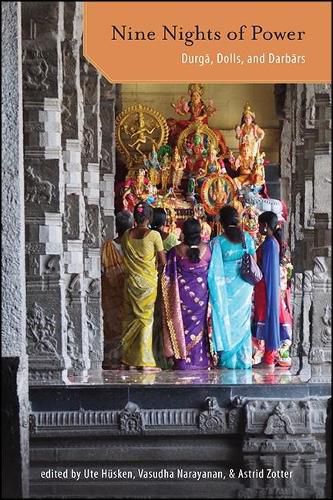Readings Newsletter
Become a Readings Member to make your shopping experience even easier.
Sign in or sign up for free!
You’re not far away from qualifying for FREE standard shipping within Australia
You’ve qualified for FREE standard shipping within Australia
The cart is loading…






The autumnal Navaratri festival-also called Durga Puja, Dassehra, or Dasain-is the most important Hindu festival in South Asia and wherever Hindus settle. A nine-night-long celebration in honor of the goddess Durga, it ends on the tenth day with a celebration called the victorious tenth (vijayadasami). The rituals that take place in domestic, royal, and public spaces are closely connected with one’s station in life and dependent on social status, economic class, caste, and gender issues. Exploring different aspects of the festival as celebrated in diverse regions of South Asia and in the South Asian diaspora, this book addresses the following common questions: What does this festival do? What does it achieve, and how? Why and in what way does it sometimes fail? How do mass communication and social media increase participation in and contribute to the changing nature of the festival? The contributors address these questions from multiple perspectives and discuss issues of agency, authority, ritual efficacy, change, appropriation, and adaptation. Because of the festival’s reach beyond its diverse celebrations in South Asia, its influence can be seen in the rituals and dances in many parts of Western Europe and North America.
$9.00 standard shipping within Australia
FREE standard shipping within Australia for orders over $100.00
Express & International shipping calculated at checkout
The autumnal Navaratri festival-also called Durga Puja, Dassehra, or Dasain-is the most important Hindu festival in South Asia and wherever Hindus settle. A nine-night-long celebration in honor of the goddess Durga, it ends on the tenth day with a celebration called the victorious tenth (vijayadasami). The rituals that take place in domestic, royal, and public spaces are closely connected with one’s station in life and dependent on social status, economic class, caste, and gender issues. Exploring different aspects of the festival as celebrated in diverse regions of South Asia and in the South Asian diaspora, this book addresses the following common questions: What does this festival do? What does it achieve, and how? Why and in what way does it sometimes fail? How do mass communication and social media increase participation in and contribute to the changing nature of the festival? The contributors address these questions from multiple perspectives and discuss issues of agency, authority, ritual efficacy, change, appropriation, and adaptation. Because of the festival’s reach beyond its diverse celebrations in South Asia, its influence can be seen in the rituals and dances in many parts of Western Europe and North America.